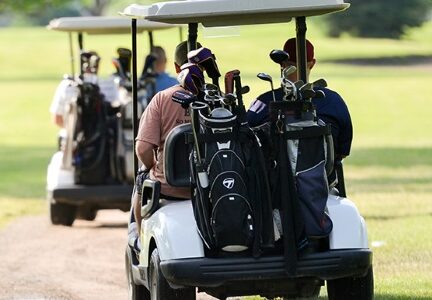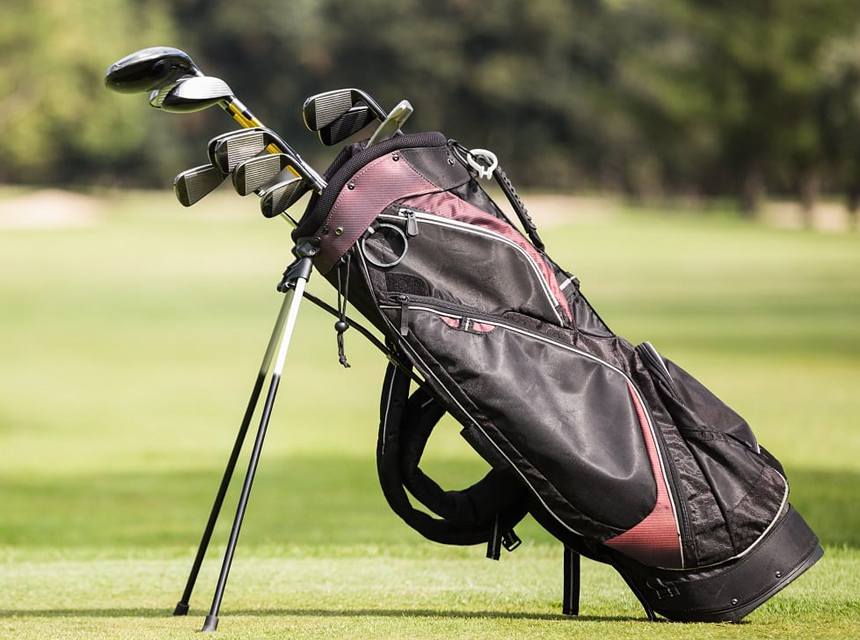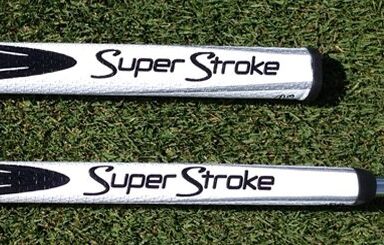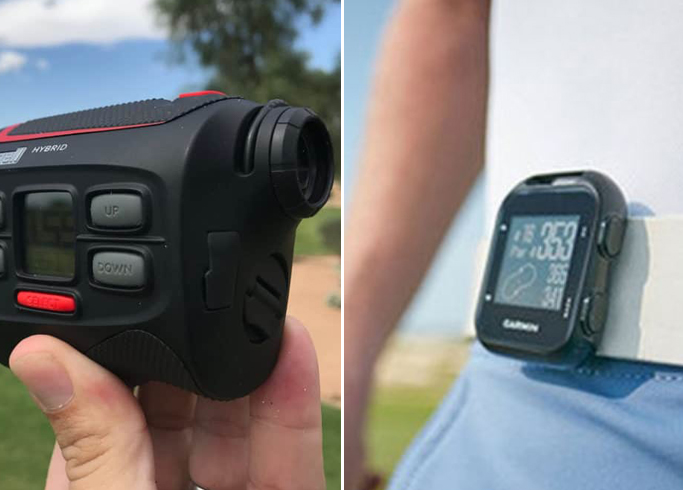
The most fun part of going to the golf range is making almost all the holes. It’s not only exhilarating but also gives you bragging rights. However, when you’re just starting out, hitting the ball right is difficult, which is where rangefinders come into play. They are tools that help you reach your target by letting you know the distance you need to cover. You probably think that using this tool is easy, but that’s not always the case.
Going through the manual maBackend Editory give you an idea of how to use a golf rangefinder, but for high levels of proficiency, you need to get some hands-on experience. Due to advanced technology, golf rangefinders are more user-friendly, but you could still benefit from unconventional advice and expert tips. You never know when they’ll come in handy.
The world of golf is fast-paced, and changes are constantly being implemented. According to Golf Digest, Jim Richerson, the president of Americas PGA, recently highlighted that the association is always interested in implementing methods that impose the gear, especially during championships. This was after the PGA announced that they would allow players to use distance measuring devices during the championships.
Golf rangefinders are tools that are designed to help you improve the accuracy of your shot by highlighting the distance between you and the target. They use light beams to calculate distance and provide important data such as the time it takes light to bounce off a certain target, distance to the target, and temperature. This information comes in handy when you’re trying to hit your driver.
Here are the main types of golf rangefinders.
These types of rangefinders use pin-seeking technology to determine the distance between your intended target and the obstacles. This then allows you to find the flagstick, ultimately improving your aim.
Laser golf rangefinders use light beams to determine the distance between you and your target. At first, using this type of rangefinder feels weird and requires lots of practice. However, once you get used to the tool, you have a significantly easier time aiming your shots. This rangefinder zooms in on your intended target and calculates the time it takes for the light beams to bounce off it. This then enables you to see the total distance. You should note that the accuracy of laser rangefinders is dependent on the weather and that they can take a while to calculate the distance. This is because temperature impacts the speed of light.
According to multiple reviews, the Callaway Laser Golf Rangefinder is the best model. It has precise slope measurements and accounts for elevation. This model also comes with a 6x magnification feature and uses pin licking technology to help you lock on turrets that are 300 yards away. It uses a pulse confirmation feature and vibrations to let you know when it has locked on a target and comes with a hard carry case. Most importantly, this tool is legal for tournament play.
Golf ranges are rarely even, and optical rangefinders come in handy. They help you determine the distance between the golf range slopes and targets. With an optical rangefinder, you can easily determine a pin’s height and then turn it to a distance reading. You, however, have to concentrate using one eye, which can get exhausting.
If you’re in the market for a budget rangefinder, the TIDEWE Golf Rangefinder comes highly recommended. It’s designed for both professional tournaments & recreational use and comes in an ergonomic design. This device is also waterproof and comes with a magnetic holder.
Yes!
When you’re just starting out, it’s so easy to give up and get discouraged when you miss most of your holes. A golf rangefinder enhances your decisions and allows you to make accurate shots.
According to Golf.com, the recent decision by America’s PGA to allow these devices during tournaments marks a dramatic shift in the future of golf. Before this, the players and caddies had to mark off their own distances.
According to Golf Digest, rangefinders bring the world to your fingertips. There are various types of rangefinders, so before you get started, it’s important that you go through the manufacturer’s manual. Some models are difficult to use, but after a while, you get used to them. Here’s a step-by-step guide on how to use a golf rangefinder.
There are various types of rangefinders, including some that are specifically designed for outdoor activities such as hunting. So, before you make a purchase, ensure that you get the right model.
Find the power button and switch your rangefinder on. Keep in mind that rangefinders come with various features, so acquaint yourself with them. This way, you’ll be better positioned to adjust the device to account for slopes and change the modes. Ensure you make the relevant adjustments and that you’re able to see targets clearly.
It’s important that you first stabilize your rangefinder before using it so that you can get accurate information. If you’re having a hard time stabilizing it, first relax and then rest your elbow on your chest to create a solid base. You should then first aim it at the ground before you aim it at your target. Once you’re certain that your device is ready to operate, you should then lift it to eye level and aim at your target.
Activate your device, depending on the kind of rangefinder that you have. For instance, if you have a GPS rangefinder, you need to first load the map of the range onto the device. Once everything is set, you can now activate it to take the readings.
Analyze the distance readings and then use this information to increase the accuracy of your shots.
Aiming a rangefinder is fairly easy, and there are 2 places where you can aim it:
One of the mistakes that players make is failing to use their device on the tee of par 4s and par 5s. What they don’t realize is that the yardage is still important even when the pin is out of range when they get to a tee. If you’ve never played a tee before, take out your rangefinder and analyze the hole in front of you. It won’t take you a long time to determine the location of various obstacles such as water hazards, trees, and bunkers in relation to the tee. You may have a hard time hitting most of them using your rangefinder, but you’ll always find objects nearby that will give you a rough idea of where everything else is.
This technique is rarely used, but it’s the best way to ensure your rangefinder learns the landscape. If your device has a slope, it can help you account for the uneven areas and hills between you and the target. By adopting this method, you’re able to create a mental map of the hole, which then helps you create an effective strategy. If you’d like to gain more control over the range, you should try measuring the distance between the landmarks and the target. The good news is that there are advanced rangefinders that feature a scan mode. This helps you measure the distance around the obstacles, and all you have to do is hold the button down.
Don’t just fire away after you snag the pin yardage. Make sure you assess the landscape first when you reach the green or on-approach shots. When you’re just starting out, you should aim to avoid as many mistakes as it’s more impactful compared to focusing on making the perfect shot.
First, take note of all the obstacles, including water, bunkers, and how far your approach shot is from the front and back of the green. You should then take the shot. We recommend that you avoid aiming right at the point but instead aim at the most open part of the green. Yes, rangefinders are highly effective, but you shouldn’t neglect good golfing strategies.
Most golf holes aren’t flat, and you’ll frequently come across those that have slight or severe slopes. This variation in elevation means that the ball travel will be different depending on the type of slope. You should use a rangefinder to adjust for the elevation changes, so it’s important that you go for a model with a slope setting. Keep in mind that the slopes and hills impact your distance, so a device that has slope settings will help you determine the distance between you and the target.
To get accurate readings, first ensure that you’re standing parallel to the target. You should then set the sights as this will help you achieve the best visual clarity. The final step is aiming the rangefinder at the ground before aiming it at the target. It will calculate both the slope and the angle of return.
You should note that rangefinders have distance restrictions, and not all of them can measure long distances. For instance, some of them can only measure upto 300 yards, while others can go as far as 1000 yards. So, make sure you buy a device based on the distance that you plan on measuring.
Before making a purchase, you should also consider the accessibility of the rangefinder. If you plan on using the device on almost all shots, you should go for a model that’s easily portable and is lightweight. Make sure you also practice even when you’re not rolfing. The same proficiency you need when making shots is also required when using a rangefinder.
One of the unprecedented challenges that you’ll face when using your rangefinder is keeping it steady. Most golfers assume that using rangefinders should be instinctive, but you’ll notice that your hands will shake at first. You may even have a hard time trying to hold the rangefinder steady; it doesn’t give up just yet. First, hold your rangefinder on your dominant hand and then lay your elbow in your chest. This position goes a long way in stabilizing your arm.
It’s okay if you feel nervous; it’s normal. This will, however, affect your sight, so try to relax as much as you can by taking deep breaths. Once your hand is steady, activate your device. You’ll have to practice a couple of times to get the hang of it after a while; you’ll be better positioned to use a rangefinder with ease.
Some of the other effective tips of using rangefinders include;
Most importantly, don’t get addicted to rangefinders. They are so convenient that you may find yourself using them even on easy shots. This is especially important if you plan on joining championships. There are restrictions on the kind of devices that you can use.
If you’re researching how to use a golf rangefinder, then the above guide is a great place to start. At first, you may have a hard time keeping your hands steady, but after a while, you get used to it. Using a rangefinder is as simple as turning it on, finding our target & aiming at it, activating the device, and analyzing the readings. Just make sure you get the right kind of rangefinder before making a purchase. According to Golf Digest, technological advancements have made it so that you can turn your smartphone into a rangefinder. We, however, recommend that you buy devices that are specially designed for golf.





